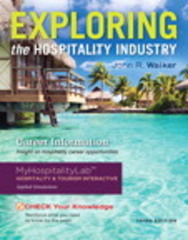Question
Waiting for Clearance He wanted the help, but CEO Tony Bussard apparently wanted to relinquish none of the power when he agreed with board members
Waiting for Clearance He wanted the help, but CEO Tony Bussard apparently wanted to relinquish none of the power when he agreed with board members of Alvon Biometrics to maintain control over the financial and administrative side of the company while naming a COO to oversee day-to-day operations.
Everyone agreed that the job was too big for one guy. After months of assessments, interviews, and discussion, Juan Carlos De la Vega was hired as COO for the company.
De la Vega came to Alvon from a smaller rival company and was initially excited about his new position and the future of Alvon. De la Vega trained in military security investigations and became interested in the measuring and statistical analysis of biological data that included fingerprints, eye retinas and irises, voice patterns, and facial patterns that could be used in security systems. He had worked his way up through rival Bi-Tech to a position in middle management and jumped at the opportunity to guide a major company in the field about which he was so passionate. "That is so cool," was a De la Vega trademark comment as he delighted in the giant leaps of each system's gadgetry.
But De la Vega's exciting new position came with its own set of frustrations as he tried to plunge into the rapidly changing technology while simultaneously fitting into the organization and tip-toeing around Tony Bussard's ego.
Bussard welcomed De la Vega with the gusto of an under-fire field officer who looks up to see reinforcements riding into the fray. He enthusiastically introduced the new COO to everyone and raved, almost to the point of embarrassment, about De la Vega's experience and level of expertise in the field of biometrics.
"You've made my job a whole lot easier," Bussard gushed. "We're all thrilled to have you."
Now, one year into the job, De la Vega was still wondering what was expected of him and where Bussard's duties ended and his duties began. Those things were never actually spelled out in an agreement, and the boundaries remained vague and confusing. Even during the initial job interviews, Bussard and board members showed great interest in De la Vega's background and talked endlessly about Bussard's vision for the future. But now, in retrospect, the COO realized that there was little or no discussion of his vision or any mention about how he would fit into the future being laid out for him.
With no clear agreement, De la Vega's earnest efforts to get guidance about his responsibilities seemed to be brushed aside by the CEO, who remained elusive and vague.
"If he tells me one more time, 'Yeah, yeah, we'll talk,' I think I will scream," De la Vega complained. "I want to feel like a COO, not a sidekick to the CEO. At the same time, I don't want to push so hard that Bussard and the board members become concerned that they made a mistake in selecting me."
The confusion about De la Vega's role also filtered down the ranks. Employees, expecting initiative from De la Vega, remained uncertain about his range of responsibilities. People looked almost exclusively to Bussard for direction, bypassing the new COO. Workers liked De la Vega and admired his industry experience. However, old habits die hard, and the habit of yielding to Bussard's leadership remained intact. Even one year later, employees were reluctant to take a chance on angering Bussard by shifting even a portion of their attention and allegiance to De la Vega.
For his part, De la Vega knew the time for clarity was now, but he hesitated, not knowing exactly how or when to approach the CEO from a position of strength.
QUESTIONS: Answers to each question must be at least 2-paragraphs long (unless questions ask you to list) and include information from the book and/or other resources. Provide pros and cons when you can.
- If you were De la Vega, what would you do at this point? Do you think De la Vega has waited too long to make a substantial change in his relationship with Bussard? Why?
- How would you characterize De la Vega's style as a follower? What tactics might help improve his relationship with Bussard? Explain.
Step by Step Solution
There are 3 Steps involved in it
Step: 1

Get Instant Access to Expert-Tailored Solutions
See step-by-step solutions with expert insights and AI powered tools for academic success
Step: 2

Step: 3

Ace Your Homework with AI
Get the answers you need in no time with our AI-driven, step-by-step assistance
Get Started


